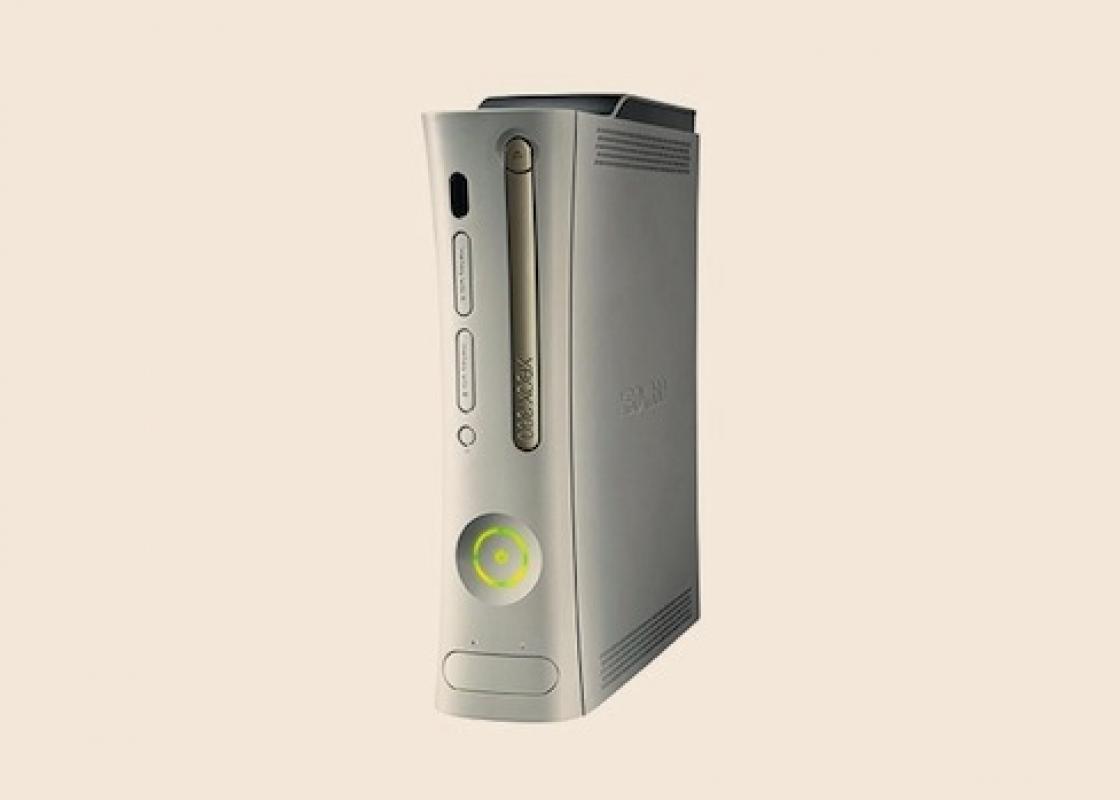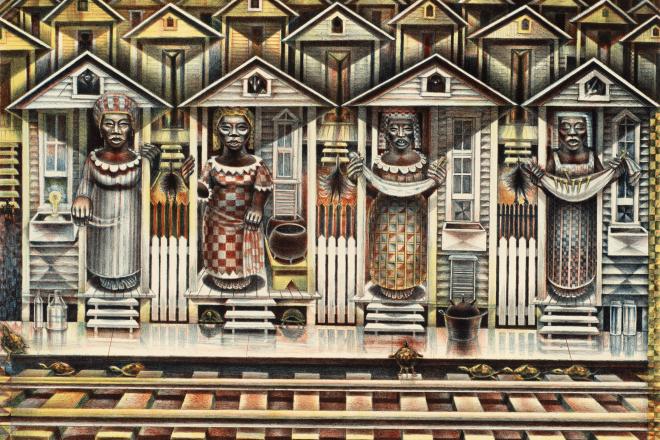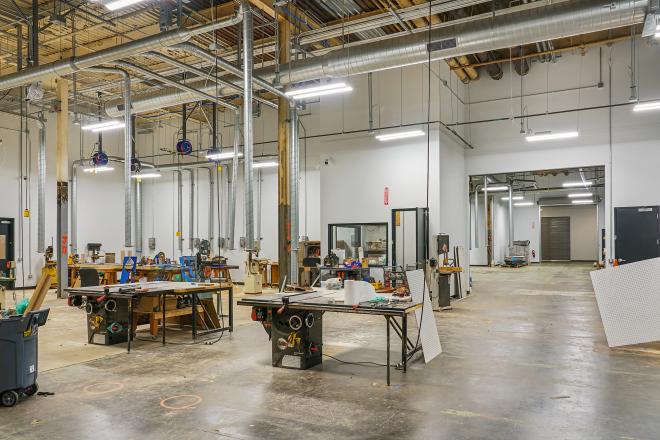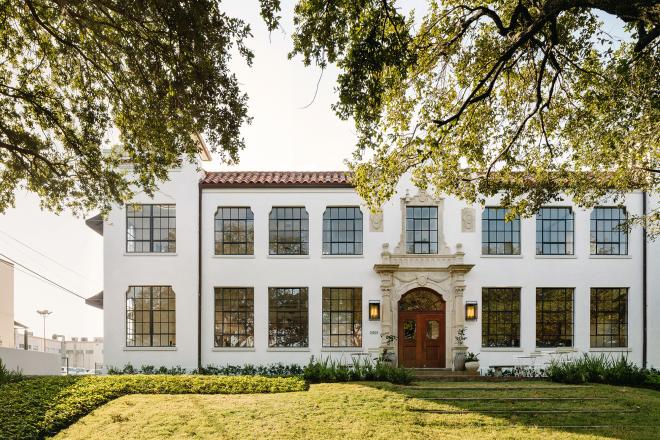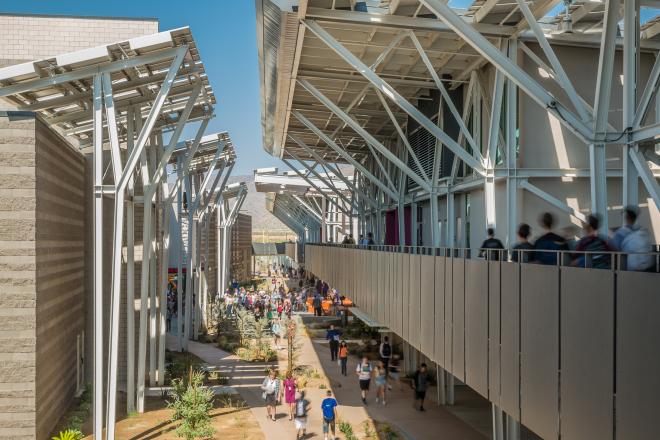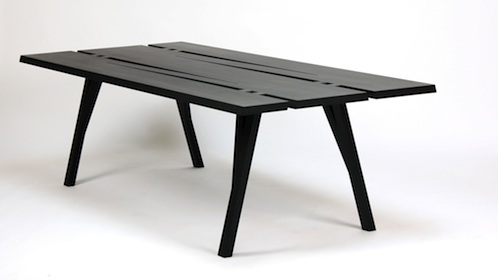
Divis table designed by Mike & Maaike
This post covers the first lecture in the Rice Design Alliance's three part series, "FURNISH." If this captivates you be sure to attend the next two.
In the earnest tone with which he delivered his entire talk, Mike Simonian suggested on Wednesday evening that, in a given body of work, “if everything is perfect, then there’s a certain ugliness to all that beauty.” This, from the designer who made the XBOX console beautiful? You’d be hard pressed to find a blunder among the offerings coming out of Mike & Maaike, the San Francisco-based industrial design studio led by Simonian and his partner, Maaike Evers. By looking for one, though, you’d also miss the point.
Simonian and Evers, with the support of an international cadre of young interns, push their projects through a concept-driven, rigorous process and produce compelling works. A sort of completed perfection, though, doesn’t come across as the primary objective. The designs pose questions without declaring answers. They stir up trouble, find intrigue in uncertainty and sometimes fly in the face of staid conventions.
Take the Divis project, which spurred the most rousing moment of the presentation at the MFAH. An exploration of the natural splitting that occurs in wood grains, the table is comprised of a top, which is punctured by voids that represent “splits,” and legs that engage into those voids. The crowd delighted in Mike’s admission that the generous amount of negative space in the Divis tabletop --- the very feature that drives home the wood grain allusion and generates so much aesthetic appeal --- effectively renders the piece useless as a functional dining table. With striations that literally drop out from the slab of material running the length of the table, it’s easy to imagine a dinner party devolving into a messy affair. Plates sliding onto laps, food and wine going everywhere. But this is the best part, argues Simonian, with his brand of infectious playfulness: when the table was realized, the designers found they’d “inject[ed] characteristics that make the product misbehave” and that such misbehaving “serves a different function than being a practical, ‘good’ table.” Perhaps a table that safely accommodates a dinner service is, in a world where possibilities and discoveries rule, a staid convention. I couldn’t help but buy this ridiculous proposal.
Neither could Council, the San Francisco company that struggled with the curious design but was so glamoured by its whimsical attractiveness that it eventually put the table into production. Council turned out to be an important character in the story of Mike & Maaike, as Simonian shed some light on the disparate experiences of working with such a small production firm and heavy-hitting players like Herman Miller (where Mike & Maaike’s designs have also come to fruition). Energy and ideas can move much more quickly toward a project’s realization within a smaller outfit like Council. Many of the pieces Simonian introduced in the talk were rushed into production shortly after their conception for design trade shows like ICFF (International Contemporary Furniture Fair), which can offer crucial exposure for design offices.
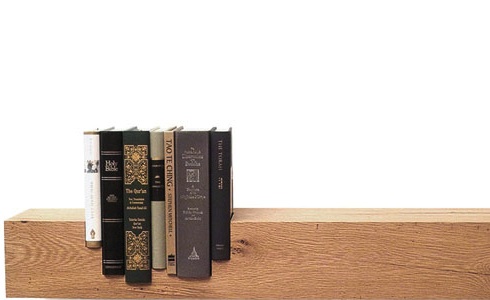
Juxtapose
Of course, there’s also the sense that a smaller, progressive production company is perhaps a more ideal fit for a design office that proposes dining tables with huge holes in them. But Mike & Maaike’s oeuvre is so diverse (remember: XBOX) because their ideas and principles expand far beyond the limits of what might be branded as Bay Area hipster sensitivities.
In the projects he shared with us, Simonian introduced the polemical as much as he did the playful. A shelf called Juxtaposed physically equalizes the seven most pervasive book-driven religions. The Bhagavad Gita, Holy Bible, Qur’an, Confucius’ The Analects, the Tao Te Ching, the Majjhima Nikaya, and the Torah sit, each in its own carved spot, sunken into a solid wood bookshelf that places the holy texts right next to each other and all at the same height. (A variation on the project does the same thing with major political texts.) The polemics in Mike & Maaike’s works even veer into Changing the Way We Live territory. In accordance with his belief that “we’ll all be in driverless cars, in the mainstream, in the next thirty years,” Mike has stirred controversy with ATNMBL (pronounced “autonomobile”), a moving architectural space that simply responds to the question “Where can I take you?” Looking at this scheme, you’d be correct to notice a bit of an attack on driver culture. Simonian admits he was once a “car person” himself but asserts that’s just not where we’re headed anymore.
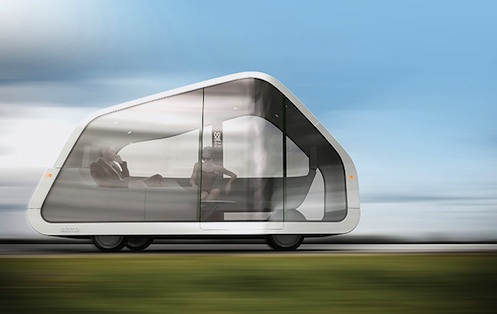
ATNMBL
It seems we can expect more Big Idea-type explorations from Mike & Maaike, as the lecture concluded with the introduction of plans for a sustained in-house collaboration with Google, which would actually bring the design firm onto the famed Mountain View, California campus. This isn’t an entirely new partnership: Mike & Maaike designed the first Android phone for Google, which eventually became the popular HTC/T-Mobile challenger to the iPhone/AT&T juggernaut. It does, however, seem to represent a sort of coming of age for the design office. Simonian opened his talk with a bit of biographical background in which he proudly touted Mike & Maaike’s founding belief that there could be no clients and no money in the first year. Those two influences, the argument holds, often impair the type of creativity you’d hope to nourish in a fledgling studio. Settling into new digs at Google HQ? Mike & Maaike have come a long way from their purist beginnings. I just hope they keep bringing us products that misbehave a little.


